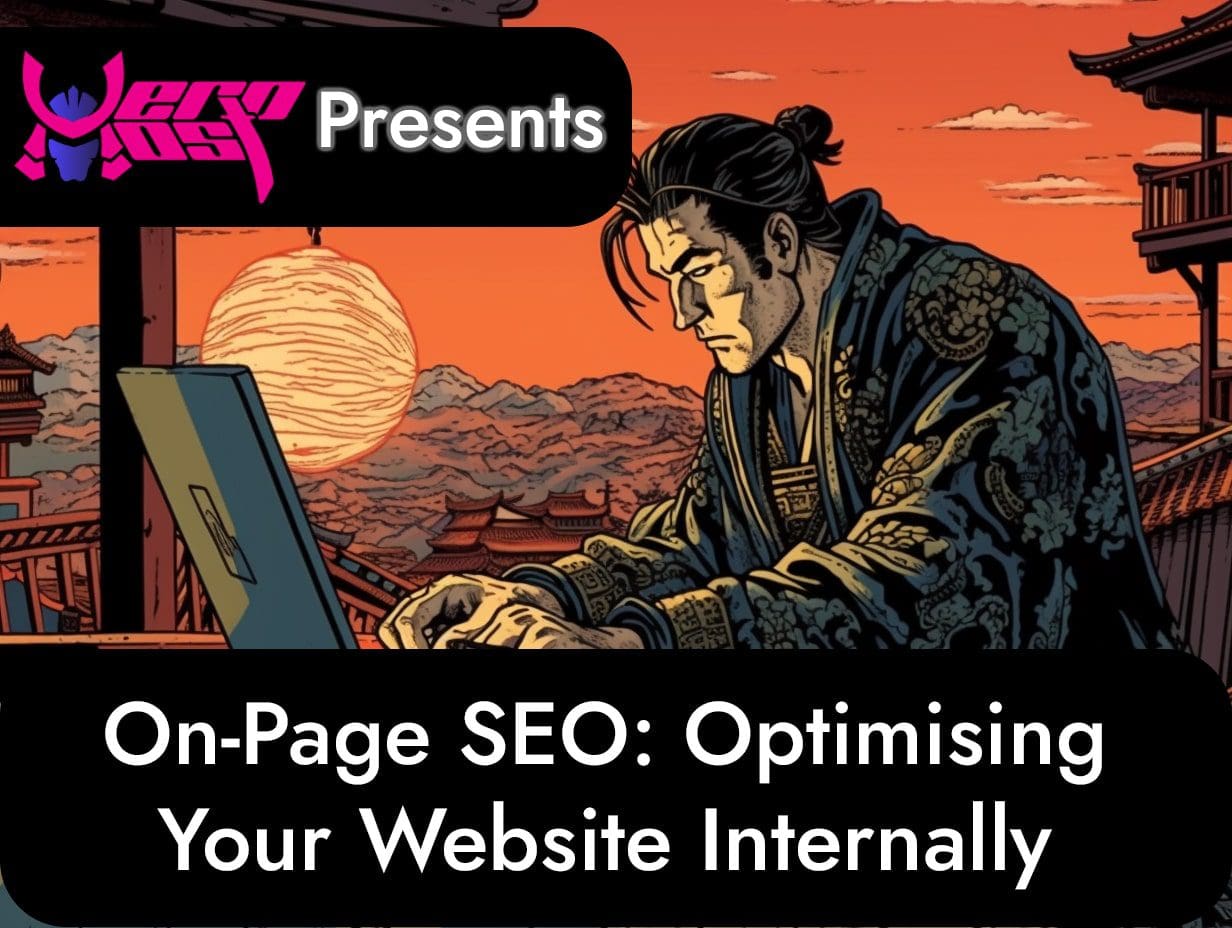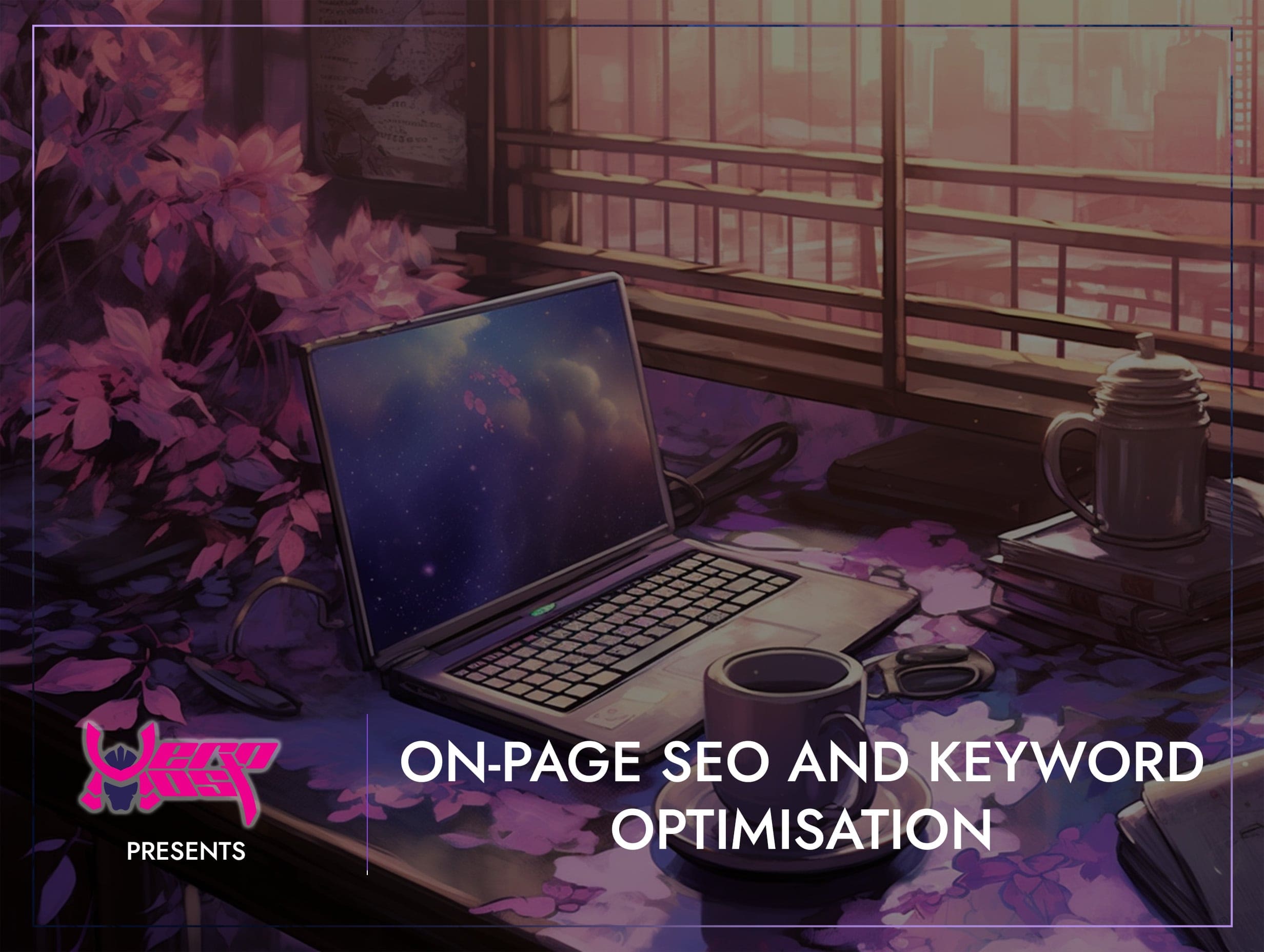On-Page SEO: Optimising Your Website Internally
- Home
- Search Engine Optimisation (SEO)
- On-Page SEO: Optimising Your Website Internally

- Mikey Ryu
- November 7, 2023
- 0
On-Page SEO: Optimising Your Website Internally
What is On-page SEO
In the world of Search Engine Optimization (SEO), there are two main categories of optimization: on-page SEO and off-page SEO. On-page SEO refers to the practice of optimizing elements on your website to improve its search engine rankings. While off-page SEO involves external factors like backlinks and social signals, on-page SEO focuses on the elements within your control. In this blog, we’ll dive into the world of on-page SEO and explore the crucial elements you need to optimize to boost your website’s visibility and rankings.
The Importance of On-Page SEO
On-page SEO plays a pivotal role in how search engines like Google rank your website. When done correctly, it can significantly impact your website’s position in search results, attracting more organic (unpaid) traffic. Here’s why on-page SEO is so important:
Improved Relevance:
On-page SEO ensures your content is highly relevant to the keywords you’re targeting. This relevancy helps search engines understand what your content is about, making it more likely to rank for relevant queries.
Enhanced User Experience:
Many on-page SEO practices, such as optimising page speed, improving mobile-friendliness, and creating high-quality content, enhance the overall user experience. A positive user experience not only pleases your visitors but also gets rewarded by search engines.
Better Crawlability:
Proper on-page SEO makes it easier for search engine bots to crawl and index your website. When search engines can efficiently access and understand your content, it can lead to better rankings.
Competitive Advantage:
By optimising your on-page elements, you can outperform your competitors in search results, capturing a larger share of the market.
Targeted Traffic:
On-page SEO allows you to target specific keywords, attracting visitors genuinely interested in your products, services, or content. This can lead to a higher conversion rate.
Key components of on-page SEO:
Title Tags
Title tags are one of the most critical on-page SEO elements. They appear as the clickable headline in search engine results and in the browser tab when a user visits your website. Each page on your website should have a unique, descriptive, and keyword-rich title tag. Keep it concise, around 60 characters, and ensure it accurately reflects the content of the page.
Meta Descriptions
Meta descriptions are the brief summaries that appear under the title tags in search results. They should be engaging and provide a clear idea of what the page is about. While meta descriptions don’t directly impact rankings, they do influence click-through rates. Make them compelling and include your target keywords.
Header Tags
Header tags, specifically H1, H2, and H3, help structure your content. The H1 tag should contain your primary keyword and reflect the main topic of the page. H2 and H3 tags are used to break down content into subsections, making it more readable and scannable.
Content Optimisation
Creating high-quality, informative, and engaging content is crucial for on-page SEO. Include your target keywords naturally throughout the content, but avoid keyword stuffing. Use related keywords and synonyms to provide context and value to your readers. Content should be well-organized with logical headings and subheadings.
URL Structure
A clean and organized URL structure helps both search engines and users understand the content of your pages. Use descriptive URLs that include keywords, and avoid long, convoluted strings of characters.
Image Optimisation
Images play a vital role in enhancing the user experience, but they can also impact SEO. Optimize images by compressing them to reduce page load times, providing descriptive alt text, and naming image files with keywords.
Internal Linking
Internal links connect different pages within your website, helping search engines navigate and index your content. They also distribute link authority throughout your site. Use relevant anchor text when linking to other pages on your website.
Page Speed and Mobile Optimisation
Page speed and mobile-friendliness are critical factors for on-page SEO. Slow-loading pages can harm your rankings, and with an increasing number of users accessing websites on mobile devices, having a mobile-friendly site is essential.
Schema Markup
Schema markup is a form of structured data that provides additional context to search engines. It can enhance your search results by adding rich snippets, such as star ratings, event information, and more.
User Experience
An exceptional user experience is crucial for on-page SEO. Ensure that your website is easy to navigate, with clear calls to action, a logical site structure, and a well-designed layout.
In conclusion, on-page SEO is a fundamental aspect of optimizing your website for search engines. By paying attention to title tags, meta descriptions, header tags, content quality, URL structure, image optimization, internal linking, page speed, mobile-friendliness, schema markup, and user experience, you can improve your website’s rankings and drive more organic traffic. Remember that SEO is an ongoing process, and regularly updating and maintaining these elements is essential for long-term success in the digital landscape
Search
Categorys
- Branding (12)
- Business Growth Guides (3)
- Business Insights (3)
- Content Marketing (43)
- Domain Authority (19)
- Email Marketing (28)
- Google Analytics & Search Console (5)
- Hack or Not (2)
- Hero Host News (0)
- Inbound Marketing (32)
- Lessons From Asia (40)
- Marketing Guides (11)
- Martial Arts Journey (14)
- Outbound Marketing (8)
- Search Engine Optimisation (SEO) (41)
- Social Media Marketing (38)
- Web Design (20)
- Website Hosting (4)
- Wordpress (2)






